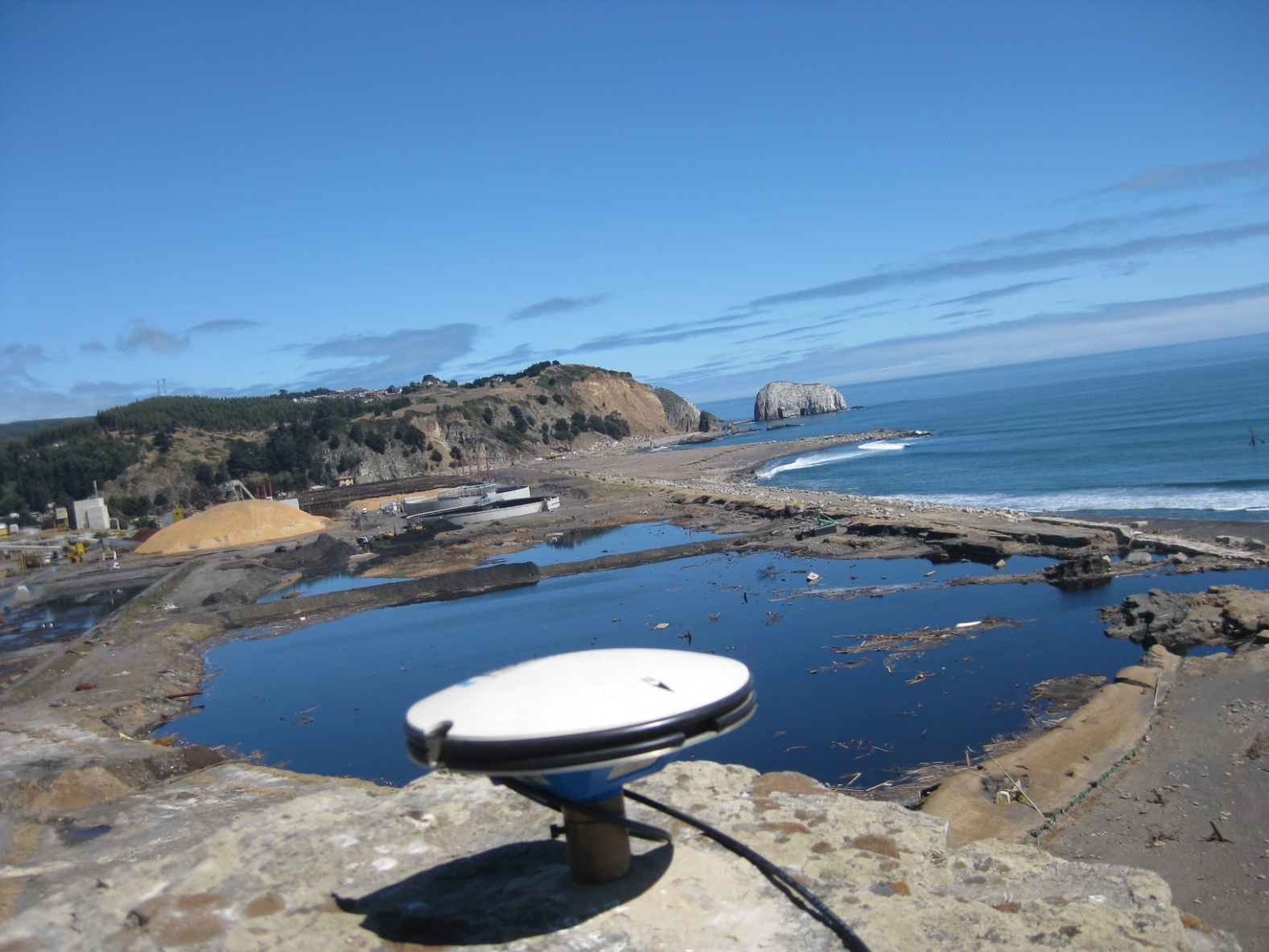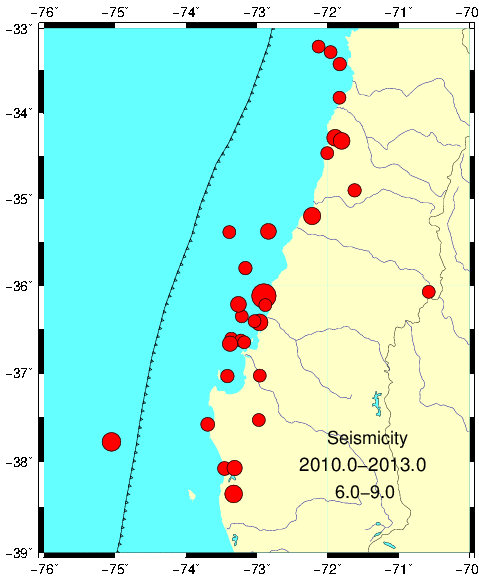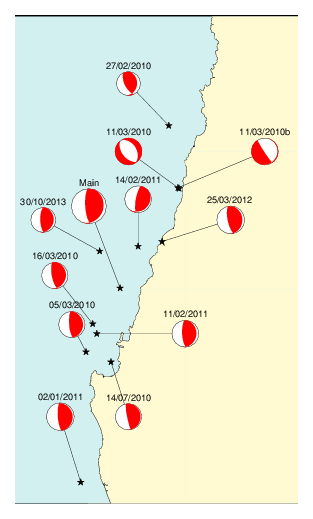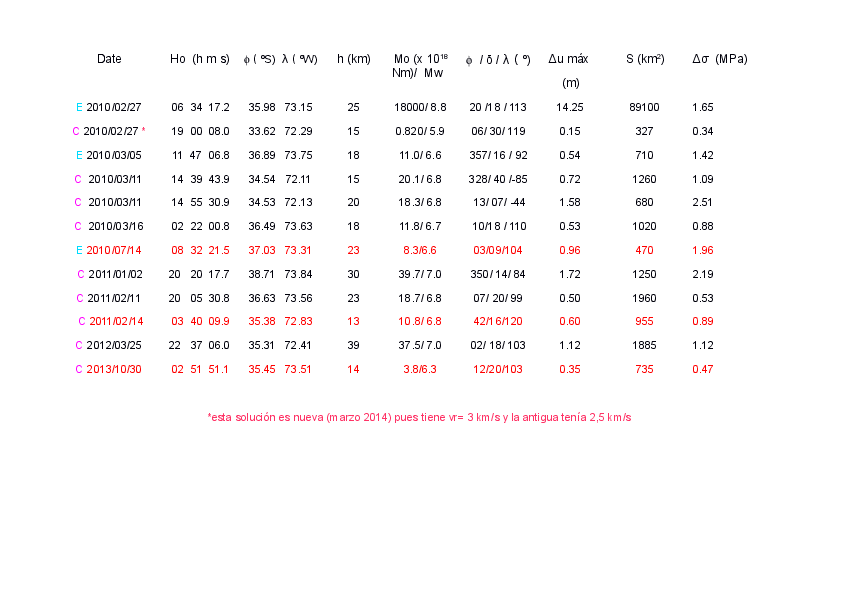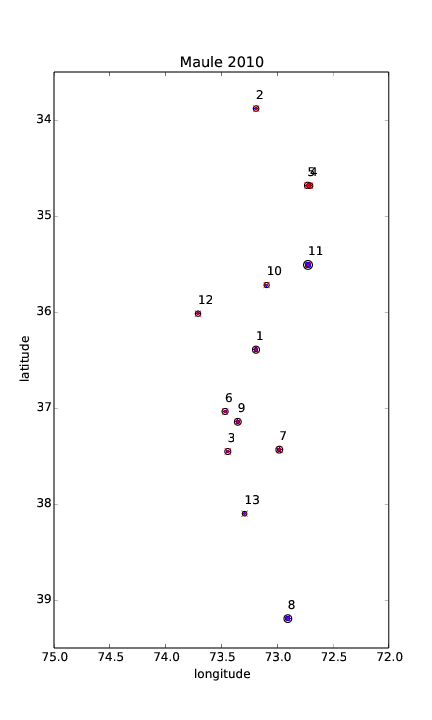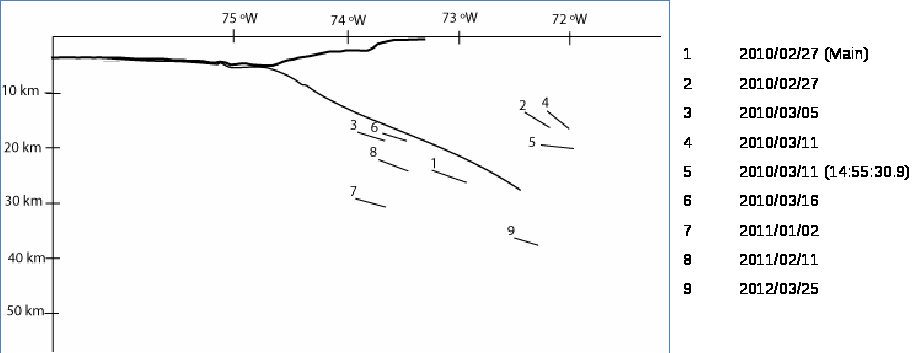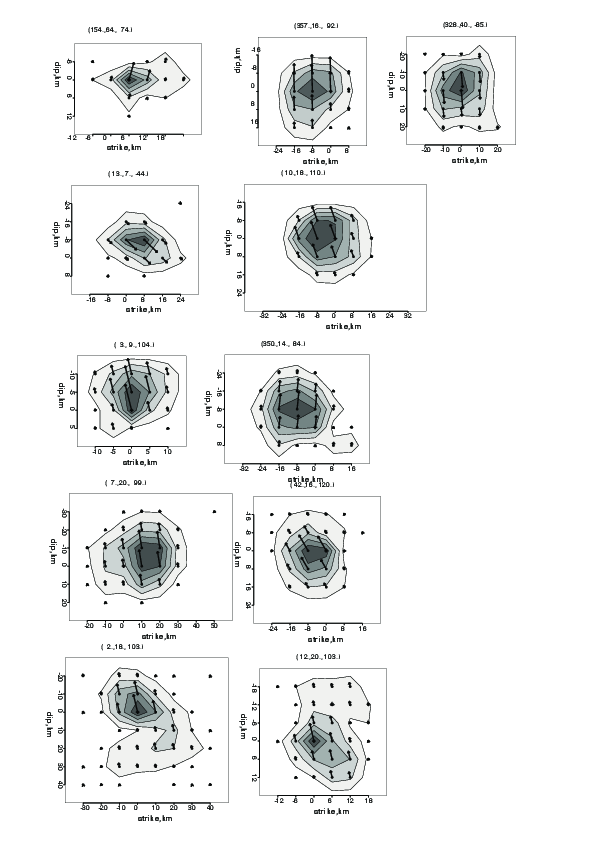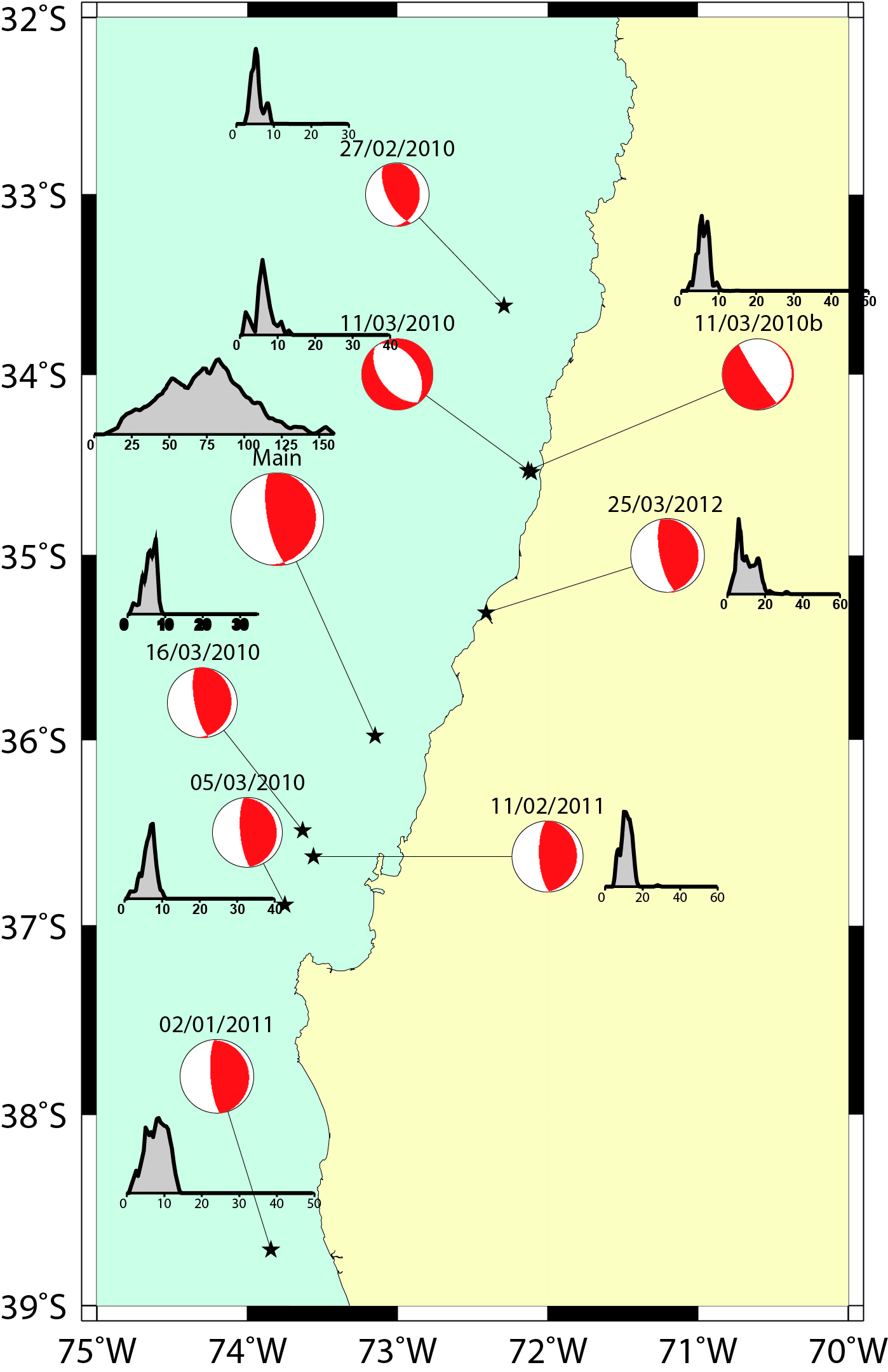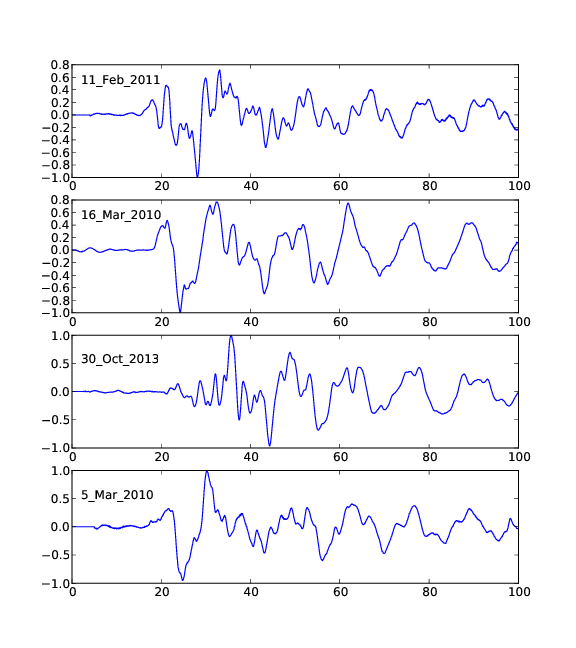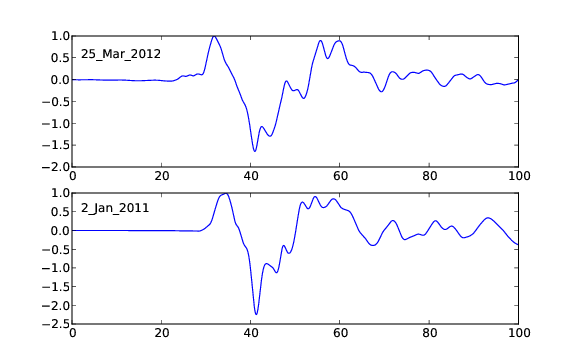27 2 2010 6 34 11.53 -72.898 -36.122 22.90 8.80 | DONE number 1
|
27 2 2010 8 1 23.01 -75.048 -37.773 35.00 7.40 | data not available. Event is buried in microseismic noise
|
27 2 2010 10 30 36.40 -71.955 -33.281 35.00 6.10
|
27 2 2010 17 24 30.59 -73.208 -36.354 19.00 6.10
|
27 2 2010 19 0 6.86 -71.828 -33.422 31.10 6.20 | DONE number 2
|
28 2 2010 11 25 35.92 -71.617 -34.903 46.00 6.20
|
3 3 2010 17 44 25.04 -73.360 -36.610 20.00 6.10
|
4 3 2010 1 59 48.67 -72.125 -33.216 24.20 6.00
|
5 3 2010 9 19 36.38 -73.223 -36.631 29.90 6.10
|
5 3 2010 11 47 6.82 -73.374 -36.665 18.00 6.60 | DONE number 3
|
11 3 2010 14 39 43.95 -71.891 -34.290 11.00 6.90 | DONE number 4
|
11 3 2010 14 55 27.51 -71.799 -34.326 18.00 7.00 | DONE number 5
|
11 3 2010 15 6 2.13 -72.004 -34.470 31.50 6.00
|
15 3 2010 11 8 28.96 -73.158 -35.802 14.00 6.20
|
16 3 2010 2 21 57.94 -73.257 -36.217 18.00 6.70 | DONE number 6
|
28 3 2010 21 38 28.00 -73.385 -35.387 29.90 6.00
|
2 4 2010 22 58 7.56 -72.878 -36.227 24.00 6.00
|
23 4 2010 10 3 6.18 -72.969 -37.529 32.00 6.00
|
3 5 2010 23 9 44.79 -73.454 -38.072 19.00 6.30
|
14 7 2010 8 32 21.49 -73.310 -38.067 22.00 6.60 | DONE number 7
|
9 9 2010 7 28 1.72 -73.412 -37.034 16.00 6.20
|
2 1 2011 20 20 17.78 -73.326 -38.355 24.00 7.20 | DONE numebr 8
|
11 2 2011 20 5 30.91 -72.960 -36.422 26.00 6.90 | DONE number 9
|
12 2 2011 1 17 1.41 -72.954 -37.027 16.00 6.10
|
13 2 2011 10 35 6.74 -73.176 -36.649 17.00 6.00
|
14 2 2011 3 40 9.92 -72.834 -35.380 21.00 6.70 | DONE number 10
|
1 6 2011 12 55 22.38 -73.691 -37.578 21.00 6.30 | En cours number 13
|
16 7 2011 0 26 12.64 -71.832 -33.819 20.00 6.10
|
23 1 2012 16 4 52.98 -73.030 -36.409 20.00 6.10
|
25 3 2012 22 37 6.00 -72.217 -35.200 40.70 7.10 | done number 11
|
7 6 2012 4 5 4.52 -70.570 -36.074 8.00 6.00
|
31 10 2013 4 5 4.52 -70.570 -36.074 8.00 6.00 | done number 12
|

